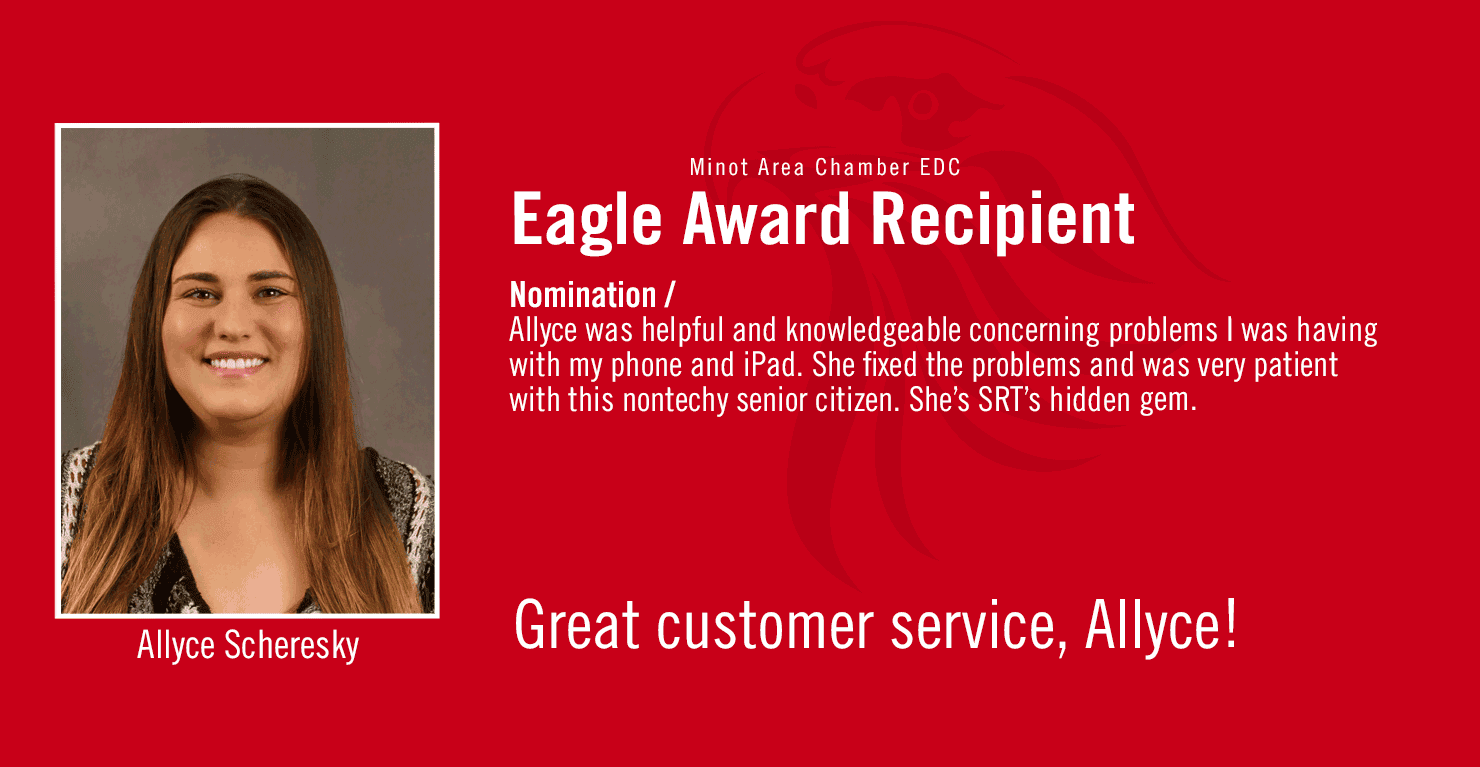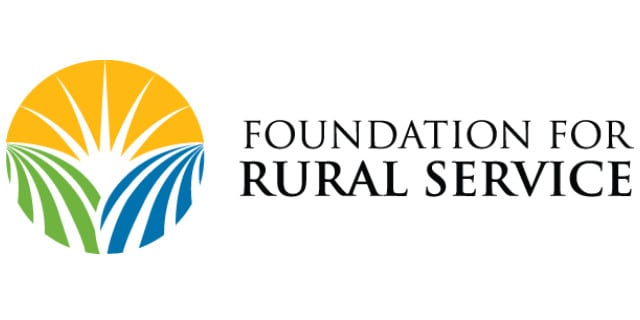
Allyce Scheresky, a Member Service Specialist at SRT, recently received an Eagle Award for the Month of December from the Minot Area Chamber EDC. The Eagle Award recognizes excellence in customer service and the recipients must be nominated to receive this award.
The customer who nominated Allyce had been experiencing various technical issues on their devices, and was impressed by Allyce’s patient and friendly nature. The nominator stated, “Allyce was helpful and knowledgeable concerning problems I was having with my phone and iPad. She fixed the problems and was very patient with this non-techy senior citizen. She’s SRT’s hidden gem.“
This is Allyce’s second Eagle Award nomination since she began working at SRT last year. Congratulations on this well-deserved recognition, and thank you for taking great care of our customers!

 Tech support scams use scare tactics to trick you into technical support services to supposedly fix device or software problems. At best, the scammers are trying to get you to pay them to fix a nonexistent problem. At worst, they’re attempting to gain remote access to your computer under the guise of fixing the problem, so they can instead install malware, ransomware, or other unwanted programs to steal your personal information.
Tech support scams use scare tactics to trick you into technical support services to supposedly fix device or software problems. At best, the scammers are trying to get you to pay them to fix a nonexistent problem. At worst, they’re attempting to gain remote access to your computer under the guise of fixing the problem, so they can instead install malware, ransomware, or other unwanted programs to steal your personal information.




